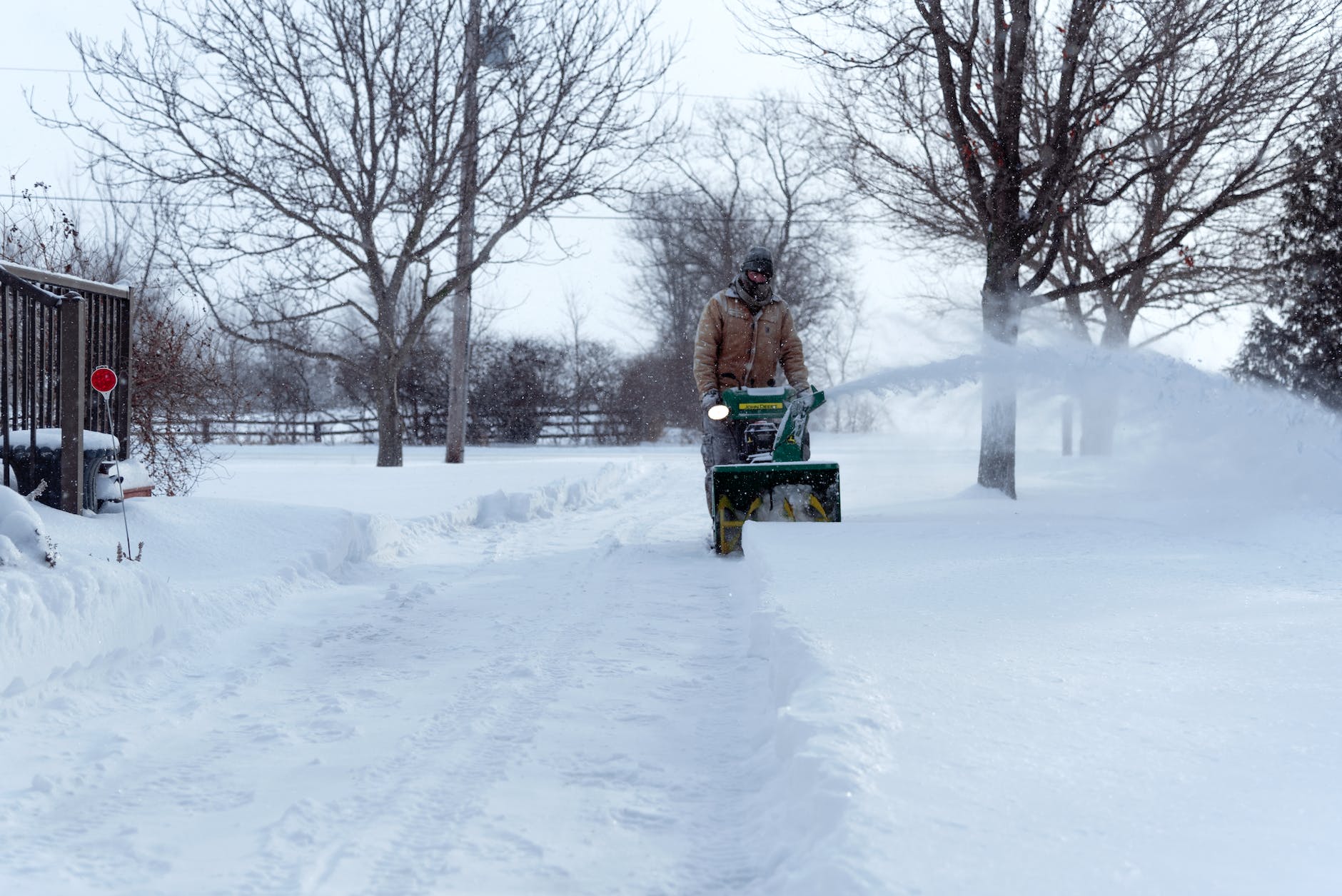If your snowblower starts with starting fluid then dies, you can immediately limit your diagnosis to the fuel system. This is a classic indication of a fuel related issue.
Tools Needed (Commissions Earned)
The fact that your snowblower will start with starting fluid indicates that the spark system is working correctly. We can also assume that there is adequate compression, otherwise it wouldn’t have started.
This brings us to the third leg of the gasoline engine requirements: fuel.
The reason that the snowblower will run on starting fluid is because all elements are present – air/fuel mix, spark, and compression.
As soon as the fuel is used up (in this case, the starting fluid), the machine dies. Why is that?
Because it’s not getting continual fuel. So let’s discuss the fuel system and some of the possible failure points.
The Fuel Tank
This is obvious right? Gasoline engines need fuel. So not only do you have to ensure that there is fuel in the tank, also check to ensure that it’s not old, stale fuel.
As gasoline ages, it loses its “combustability.” In short, the fuel becomes more viscous and does not combust as easily. The gelling of old fuel is exacerbated by ethanol mixed in with today’s gasoline.
That’s a big reason to use ethanol free gasoline for all of your outdoor power equipment.
The thickened gasoline can cause prevalent issues throughout the entire fuel system, as we’ll discuss.
The Fuel Filter
Moving on, the fuel has to travel through a fuel filter (if one is present). The filter strains out any sediment or debris that was in the fuel tank. We don’t want that getting into the combustion chamber, so the filter does an important job.
That being said, a lot of snowblowers don’t have a fuel filter. I like to add one in to the fuel line from the fuel tank to the carburetor. They’re cheap and provide a little bit of protection to the system.
The problem with fuel filters is that they are consumables, meaning, they have to be replaced eventually. I typically replace them every other season for the amount that I run my machines.
If you take a look at a fuel filter, there’s usually some amount found in the reservoir. Even if you drain the fuel system correctly at the end of the season, there’s generally a residual amount left in the filter.
That, and with normal use, can lead to the filter becoming clogged with gelled fuel. It’s another potential source of fuel restriction.
Fuel Pump
Most snowblowers are gravity fed; the fuel tank is higher than the carburetor, so gravity will feed the fuel and no fuel pump is required.
However, it’s worth mentioning a fuel pump in regards to the fuel system because on a lot of engines (not necessarily snowblowers), the fuel pump is a vital component.
Fuel pumps are typically used if the fuel tank is lower than the carburetor and gravity is not an option.
You can check to see that the fuel pump is working correctly by removing the fuel line after the pump. Then, as you crank the machine you should see fuel spurting out of the fuel pump. If you don’t, then it’s possible that the fuel pump has failed.
The Carburetor
The last and most common issue with fuel related problems is the carburetor. The carburetor is a finicky component and the cause of much frustration.
Its purpose is to mix the fuel and air in the correct proportion to enter the combustion chamber. Tiny jets spray aerosolized fuel into the combustion chamber for firing.
If any of the jets are clogged or restricted, then the fuel is limited. This restriction can be caused by dirty fuel (which is why I like to add filters), old fuel, rust from the fuel tank, or simply sediment and debris.
Another issue with some carburetors is an electronic solenoid that shuts off fuel to the carb. This is designed to prevent the old fuel issue, but if the solenoid is not working correctly then the carb will not be getting any fuel.
While you can attempt to spray out the carburetor while it’s on the machine, a better option is to simply remove it for a thorough cleaning.
The thing is, if the carburetor is causing a fuel related issue, why do a half-ass job of cleaning it? Otherwise, you’re just employing the “spray and pray” method of cleaning.
Cleaning the Carburetor
Simply remove the two bolts that hold it on the machine and disconnect the throttle and choke linkages.
With the carburetor off the machine, remove the float bowl and gently take off the float bowl gasket.
Then, you can disassemble the carburetor and remove any jets that are accessible. I like to take any plastic components off the carburetor as the method I use for cleaning the carb can cause distortion to plastic.
With everything disassembled, I soak all the components in an ultrasonic cleaner. This does a fantastic job of cleaning all the internal passages of the carb that you can’t access with normal carb cleaner spray.
I then ensure that the jets are totally cleaned and reassemble everything following the removal steps in reverse.
Recap
So if your snowblower starts with starting fluid then dies, you can identify that as a fuel related issue. Further inspect the components of the fuel system as we talked about in this article, and you can point out the issue. When in doubt, clean the carb!
Did I forget anything? Let me know in the comments below.
As an Amazon Associate I earn from qualifying purchases.
